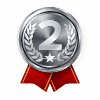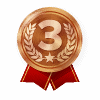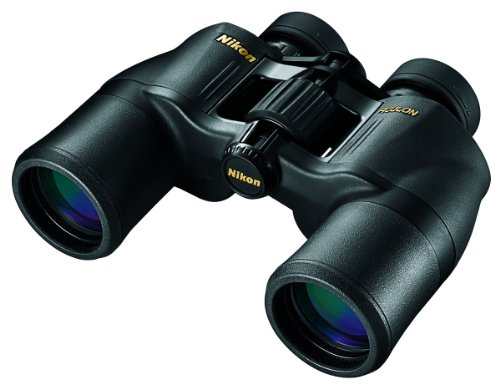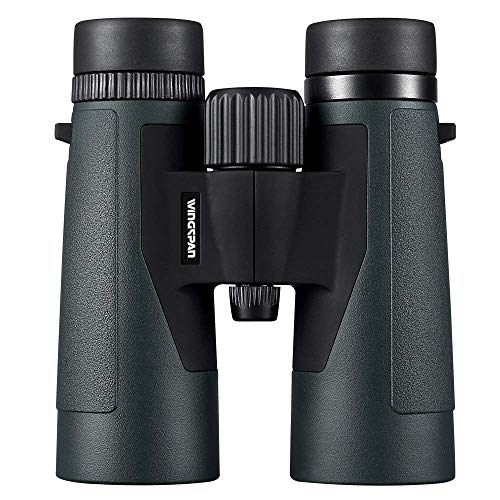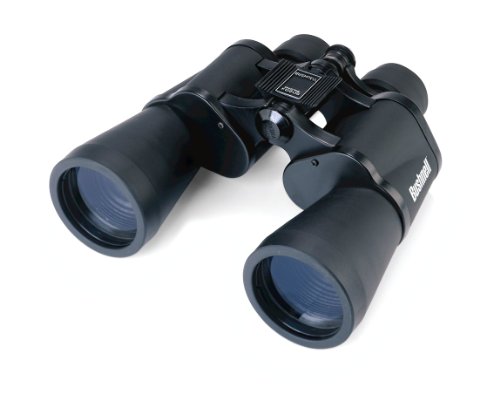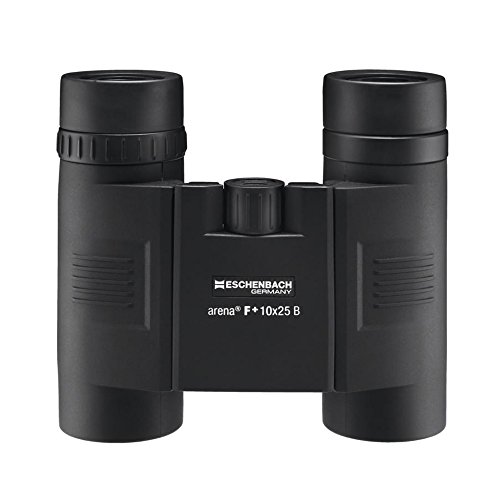5 Best Budget Binoculars under $100 of 2025 – Top Picks & Reviews
Last Updated on
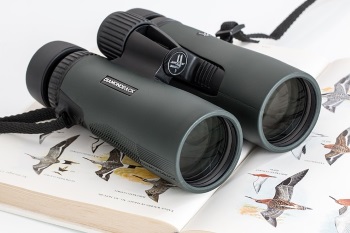
It’s entirely possible to get a decent pair of binoculars without breaking the bank, as evidenced by the models on this list. The problem with shopping on a budget is getting ripped off, especially online. Many people have found out the hard way that a pair of binoculars may look good on the monitor, but don’t deliver the performance in reality.
We don’t want that to happen to you, which is why we’ve assembled this list of the best cheap binoculars on the market today that you can get for less than $100 (at this time of writing). You can get the quality you need a reasonable price; you just need to know where to look.

A Quick Comparison (updated in 2025)
| Image | Product | Details | ||
|---|---|---|---|---|
| Best Overall |
 |
Nikon ACULON 8×42 |
|
CHECK PRICE |
 |
Wingspan EagleScout 10X42 |
|
CHECK PRICE | |
 |
Bushnell Legacy Porro Prism |
|
CHECK PRICE | |
| Best Value |
 |
Bushnell Falcon 10×50 |
|
CHECK PRICE |
 |
Eschenbach |
|
CHECK PRICE |
The 5 Best Budget Binoculars under $100
1. Nikon ACULON 8×42 Binoculars – Best Overall
The Nikon 8245 ACULON A211 8×42 has all the pedigree and features you expect from the brand. It weighs less than two pounds, so it feels sturdy while also being light enough to use for long periods. It also comes with a great rubberized coating, which makes it easier to hold in high-humidity or wet conditions. The 42-millimeter lenses aren’t the biggest on the market, but adequate at this price point. The lenses plus 8x magnification produce a wide field of view and keep the image bright and clear.
This model is equipped with adjustable eyepieces, which is a feature that allows you to change settings while in use. One quibble is that there is some exposed non-rubberized plastic on the coating, which makes it feel a bit cheap. This is a great model for people who are looking for a reliable product from a trusted brand at a reasonable price. Overall, we think these are the best budget binoculars under $100 that you can buy.
- Rubberized coating
- Lightweight
- Large lenses
- Adjustable eyepieces
- Some plastic construction
2. Wingspan EagleScout 10X42 Binoculars
The Wingspan Optics EagleScout 10×42 has 10x magnification, a feature that would make this model a good choice for many people, since it’s rare to find that level of magnification at this price point. However, this model also comes with other great features. It’s waterproof and fogproof, so it’s safe to use outdoors, even when it is humid or raining. The EagleScout also has those large 42-millimeter lenses, which produce bright, clear images.
This model is also lightweight and compact, which is great for backpacking, or just slipping it into your jacket pocket when you’re not using it. This model relies on a ball-bearing system to adjust the focus, and unfortunately, that system is a common point of failure. A pair of binoculars that can’t focus is effectively useless, so if that breaks, the whole unit is ruined. However, that problem is somewhat rare, and easily dismissed by the allure of a unit that offers 10x magnification for under a hundred bucks.
- 10x magnification
- Waterproof and fogproof
- Lightweight
- Compact
- Some quality control problems
3. Bushnell Legacy Porro Prism Binoculars
The Bushnell Legacy WP Porro Prism is manufactured in two variants: The slightly cheaper 8x model has 42-millimeter lenses, and the slightly more expensive 10x model has large, 50-millimeter lenses. Both models have the potential to make for a great experience. However, the detail and brightness you get with 50-millimeter lenses is going to dwarf that what you get with 42-millimeter lenses.
The Legacy WP’s rubberized exterior improves your ability to grip in wet conditions, and helps protect these models against damage if you accidentally drop them. They also come with good eye relief, which means that they’re easy to use with glasses. However, they’re larger, kind of bulky, and heavy, so they’re not the best in situations where every ounce matters or where space is at a premium. However, if you want that 10x experience, investing in a Bushnell is a wise choice.
- 8x or 10 magnification
- Large lenses
- Rubberized exterior
- Good eye relief
- Heavy
- Bulky
4. Bushnell Falcon 10×50 Binoculars – Best Value
The Bushnell Falcon 10×50 Wide comes with large 50-millimeter lenses and supports 10x magnification, which creates sharper images with a wider field of view, and keeps it nice and bright the whole time. This model also has a short, 25-foot minimum focus distance, which means that this is a great pair for when you need to see something out in the yard from inside the house.
The one knock on this model is its 9-millimeter eye relief, which is far too short for people who wear glasses. There’s a chance that people with excellent vision will find that distance uncomfortable, too. Otherwise, the Bushnell Falcon’s 10×50 field of view and close minimum distance justify our selection for best value.
- 10x magnification
- Large lenses
- Close minimum distance
- Poor eye relief
5. Eschenbach Budget Binoculars
The best thing about the Eschenbach 4256125 is that it folds up into a reasonably compact form when not in use, which means that you can easily put it in a jacket pocket or a backpack when you’re not using it. However, you might find yourself not using it more than you’d like, as it comes with several glaring flaws. The first of these is its exceptionally small lenses. 25-millimeters is very small, even for a discount model, which this is not. Lenses that small produce dark images, and give you an incredibly narrow field of view, which makes for a bad deal.
That would be less of a problem if the tiny 2.5-millimeter exit pupils weren’t so hard to see through. You’d expect to see exit pupils about twice that size on a good pair of binoculars. Meanwhile, they’re not the most attractive pair of binoculars we’ve ever seen. While they don’t have to look great to excel, this pair has too many drawbacks to rise from the bottom of the list.
- Compact
- Small lenses
- Ugly
- Small exit pupils

Buyer’s Guide – How to Select the Best Budget Binoculars
We hope that our reviews have given you some ideas about what you should be looking for when you shop for binoculars. We’ve packed our buyer’s guide full of good general information and features you should be on the lookout for.
Also, looking to buy a pair of binoculars for a child? We recently compared the most popular picks here.
Optics
Good optics can be expensive, but you can also get a good deal at a lower price if you know where to look. Binoculars come with a pair of numbers that describe their optical performance, which usually look something like this: “10×50.” The “10” represents the magnification, so in this instance, the view through the binocular is 10 times magnified. The second number is the diameter of the lenses in millimeters, so in this example, the lenses are each 50-millimeters in diameter.
Bigger lenses are usually better, as they let in more light, which leads to brighter images and a wider field of vision. While you’re unlikely to find ED lenses at this price point, they are some of the best lenses you can find in relatively-inexpensive models. ED, or Extra-low Diffraction lenses fight chromatic aberration by focusing all colors that pass through the lens to a single point. That makes the image sharper and keeps the level of detail high in high-magnification devices.
Did you ever wonder which pair of binoculars are best suited for safari trips? We put it to the test!
Shell Material
The outside of your binoculars is often overlooked. If the outer shell is slick, you’re far more likely to drop it, which also greatly increases the odds of breaking it. Furthermore, the material from which the shell is made can have a big impact on whether or not it can survive a fall, which means that durability matters.
The best shells are composed of textured metal, which has the highest durability while being easy to grip in moist environments. However, they also tend to be the heaviest models, which is something you should consider if weight is a factor in future travel. The next best shell is the rubberized plastic shell, which is much lighter, but the rubberized texture helps you keep a firm grip. However, they don’t hold up as well when dropped, so they’re not as durable in the long run.
Next down the list is the plain-metal shell, which can be slick in the rain, but holds up well if dropped. Finally, the plain plastic shell is the cheapest and lightest, but it can be hard to hold and also suffers from the lowers durability as it lacks even a rubber coating to insulate it from the fall.
Safety Equipment
Of course, you don’t need safety equipment to protect you from your binoculars, but given the fragile nature of their internal components, any equipment or features that protect your binoculars improves its value. Neck-straps are one of the most common and most effective means of keeping your binoculars safe. They also serve as a convenient way to keep your binoculars handy without having to hold them in your hands constantly.
Lens caps are another important safety feature. It’s best if a model comes with lens caps so that you can use them while the binocular is in storage, as that keeps them dust-free and protected. Some models come with lens caps that are permanently connected to the shell, which some people love for its convenience, while others dislike it, wishing they had the detachable kind that they could put away while they use the pair. Both kinds work well, but you should make sure you know which kind you’re getting before you buy.
Have a different budget? Here are our other lists!
– Which are our favorite binoculars for under 150 USD?
– Which binoculars under 500 USD is the winner of our tests?
– Looking for a monocular instead? Here’s our all-time favorite pick

Conclusion
The Nikon 8245 ACULON A211 8×42 is a classic, reliable Nikon-brand pair of binoculars, that easily rises to the top of our list. The Wingspan Optics EagleScout 10×42 comes with great magnification in a lightweight package but is kept out of first by some quality control problems. The Bushnell Legacy WP Porro Prism is a great deal, and you can find the largest lenses on this list on this model. The Bushnell Falcon 10×50 Wide is the best value, given its low price and its close minimum focus distance. Finally, the Eschenbach 4256125 is ugly, has small lenses, and doesn’t work well, so you should avoid it.
Hopefully, our reviews and our buyer’s guide have helped you figure out which features you should pay attention to when shopping for the best binoculars. Armed with that knowledge, you should be able to find the model that works best for you.
About the Author Robert Sparks
Robert’s obsession with all things optical started early in life, when his optician father would bring home prototypes for Robert to play with. Nowadays, Robert is dedicated to helping others find the right optics for their needs. His hobbies include astronomy, astrophysics, and model building. Originally from Newark, NJ, he resides in Santa Fe, New Mexico, where the nighttime skies are filled with glittering stars.
Related Articles:
When Were Binoculars Invented? History, Today & Future
How to Collimate Binoculars: 9 Expert Tips
Binocular Magnification Chart: Numbers & Distances Compared
What Is the Best Binocular Magnification for Hunting? Optical Features Explained
Can You Use Binoculars to Look At Stars? How to Choose the Right Pair
How to Choose Binoculars for Bird Watching: 10 Expert Tips
What Does 20X50 Mean on Binoculars? Our Helpful Guide
10 Best Binoculars in Canada of 2024: Reviews & Top Picks


